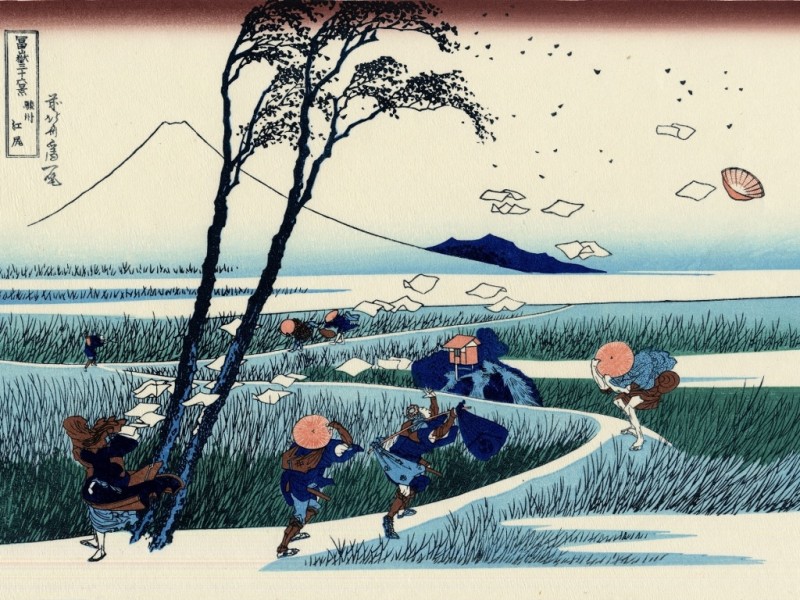The Art and The Streets of Chicago
You many not believe it, but Eric, Kailing and I actually did things other than eating and drinking when Eric and I visited Chicago late last year. One of them was soaking up the art and architecture of America’s 3rd largest city.
The Art
First is one of the city’s most famous landmarks, the Flamingo, a 53 foot tall “Calder red” colored stabile by Alexander Calder.
A passerby might mistake it for a piece by Mark di Suvero. He has made such a big name for himself with his public art that I don’t know many large American cities without at least one large scale piece by him. Di Suvero’s pieces might be newer than this Calder, but the Calder feels so much fresher.
Calder is most famous for his kinetic mobiles, but I find his stabiles to be more interesting. Unlike human-sized sculptures, their sheer scale allows them to stand with the buildings around them as equals instead of just being accessories like fences, lamp posts and mail boxes.
I love the large arching forms contrasted to the jagged diamond pieces. The structural ribs along the edges of the arches make them look like they are single extruded pieces instead of the welded sheets that they actually are.
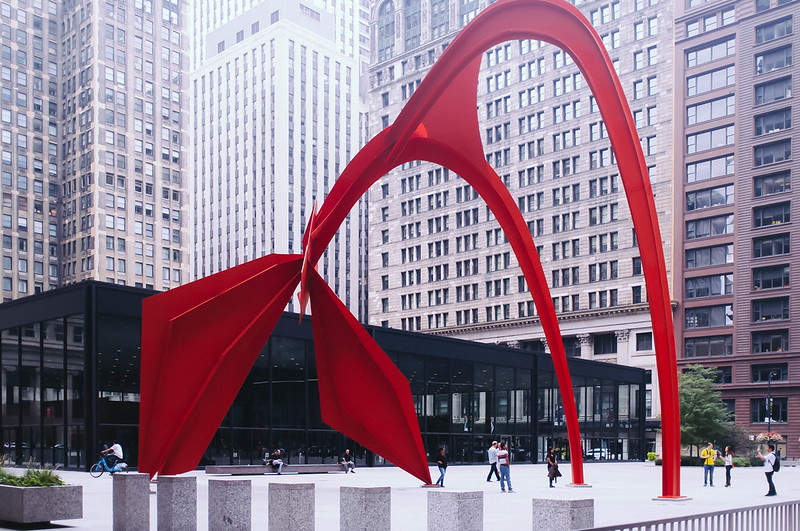
One thing I immediately noticed was the juxtaposition of the asymmetrical, continuous curves of the Flamingo against the clean rectilinear lines of the Kluczynski Federal Building. The International Style building isolates the sculpture from the rest of the city and serves as its backdrop. Even though the lines and textures of the building and the sculpture don’t match, they are both monochromatic and similar in scale. I think this is why they work so well together. A more intricate, multicolored sculpture by someone like Dubuffet or Miró would definitely not work in this space.

There is even a scale model of it! It was shown in the adjacent Loop Station Post Office for some time, but was moved to the Art Institute of Chicago, where we got to see it.
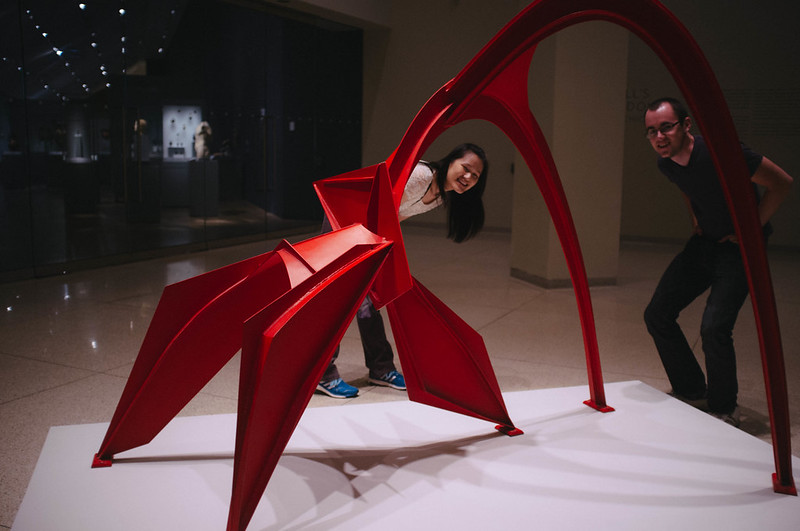
Speaking of the Art Institute, we visited in order to among other things view a special exhibition, Beyond the Great Wave: Hokusai’s Images of Mount Fuji. It featured a large number of Hokusai‘s wood block prints.
I have been a fan of Hokusai’s work for a long time since I first saw The Great Wave off Kanagawa. However popular the Great Wave may be, my favorite at the exhibition is A Gust of Wind at Ejiri. I love how Hokusai is able to portray movement in a medium that otherwise lends to very flat and static looking images.
Why is there a pile of candy in the corner of the museum? It is actually “Untitled” (Portrait of Ross in L.A.) by Felix Gonzalez-Torres. According to the Art Institute it is, “an allegorical representation of the artist’s partner, Ross Laycock, who died of an AIDS-related illness in 1991. The installation is comprised of 175 pounds of candy, corresponding to Ross’s ideal body weight. Viewers are encouraged to take a piece of candy, and the diminishing amount parallels Ross’s weight loss and suffering prior to his death. Gonzalez-Torres stipulated that the pile should be continuously replenished, thus metaphorically granting perpetual life.” Wow.
I wonder how many museum patrons actually read this description and leave understanding the meaning of the piece.
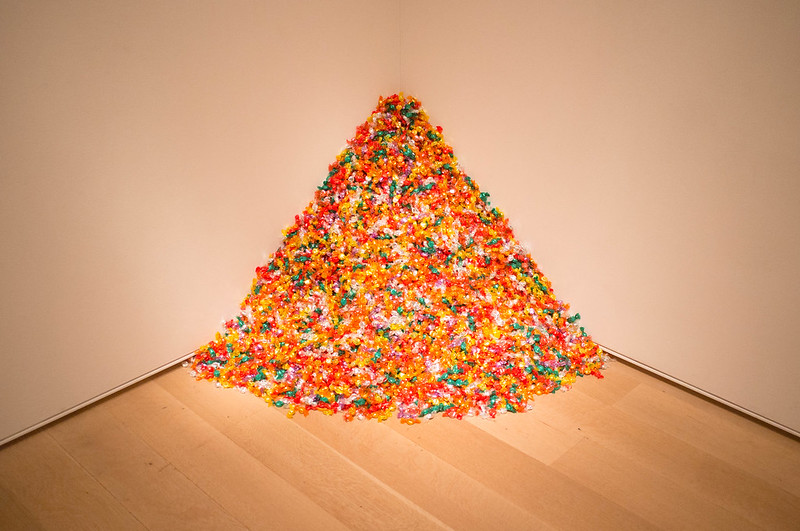
Naturally, we each took a candy.

The next work is titled Hinoki. It may look like a log but is actually a copy of a log in California that was carved by expert artisans in Osaka, Japan. The whole story is fascinating and worth a read.
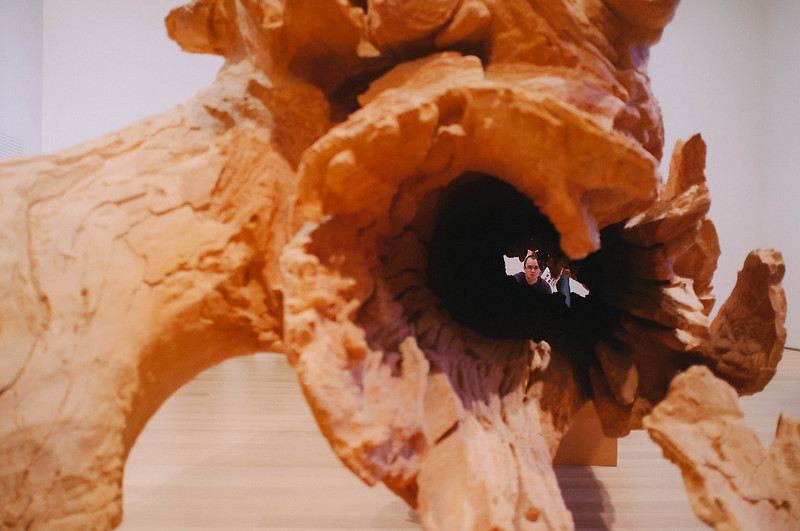
Kailing’s shoes match this painting!
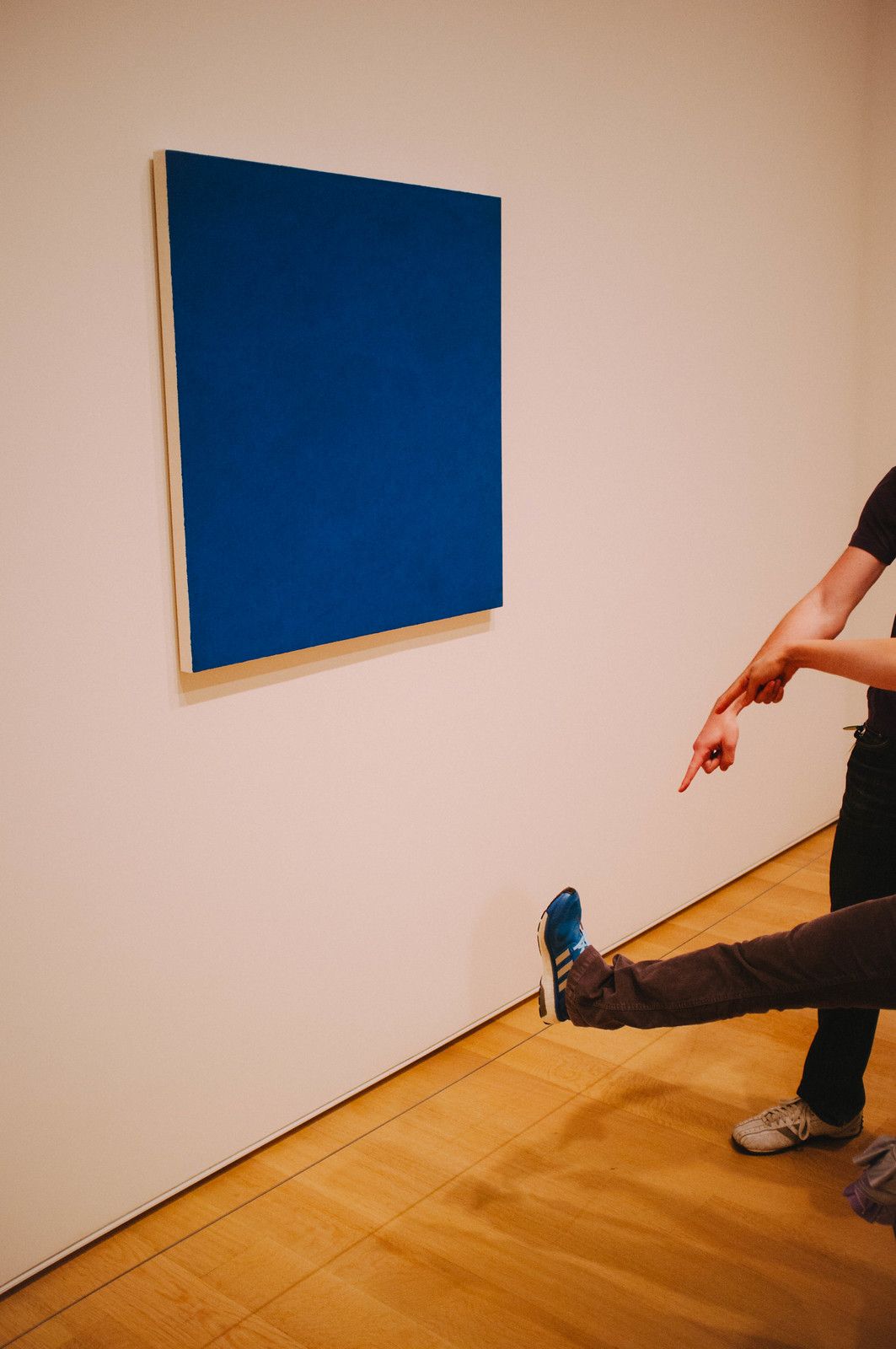
Another Chicago landmark is Cloud Gate (aka the Bean) made by Indian British artist Anish Kapoor. Just as the 5th Avenue Apple Store is the most photographed landmark in New York city, Cloud Gate could very well be the most photographed landmark in Chicago. It at least seems like that by the number of times it pops up in my Facebook News Feed.
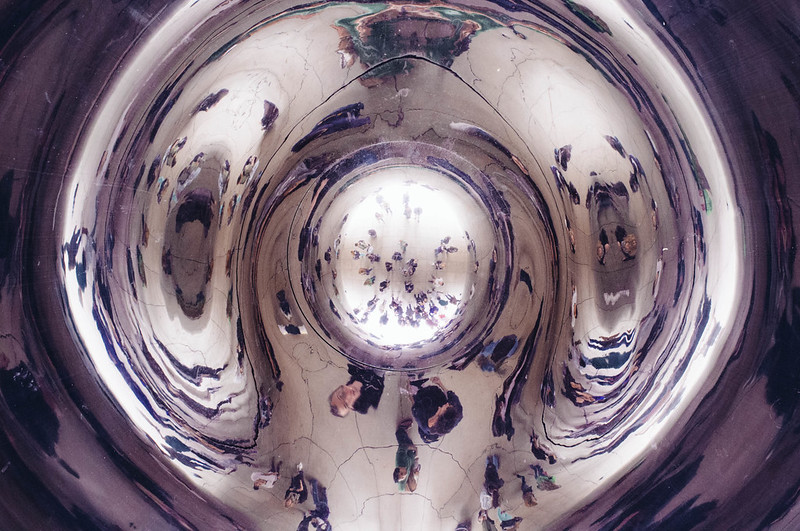
We had a chance to walk around the Chicago Cultural Center. It is a beautiful neoclassical building that formerly housed the central library. I love the 38-foot Tiffany glass dome above the central atrium. Though, we didn’t get a chance to look at it very close since there was a concert being held under it.

Another eye-catching piece of public art is a mosaic titled Time is the Enemy by Carlos “Dzine” Rolon in the Sedgwick L station.
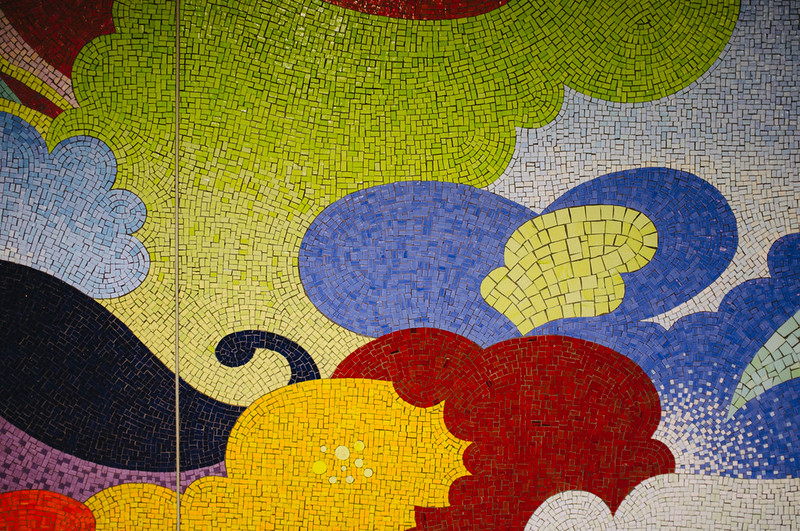
The Streets
Chicago has a great transit system. Though it isn’t as wide spreading as the Subway in New York, the ‘L‘ is still very convenient. Chicago wasn’t the first or the only city to have elevated trains. They existed in many cities and even New York still has some elevated sections of the Subway. However, elevated trains are most prominent in Chicago.
The system itself is very similar to New York’s. Both use a 600V third rail for power and have train cars that are very similar in size and appearance. The biggest difference is that the interiors of New York’s trains are equipped to fit more riders.
The L covers most of the city and even has a direct line from the airport into the city center. Also, the stations are much cleaner than New York’s, as you can see below.
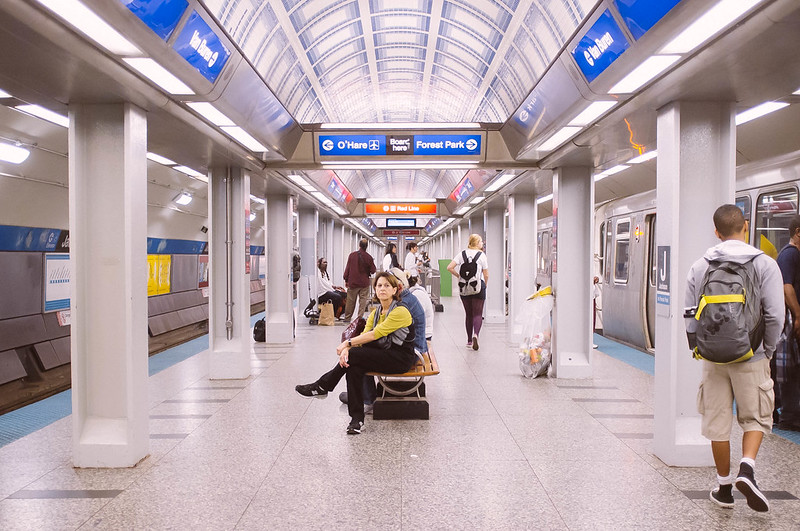
I had to take the obligatory long exposure of a train passing by.
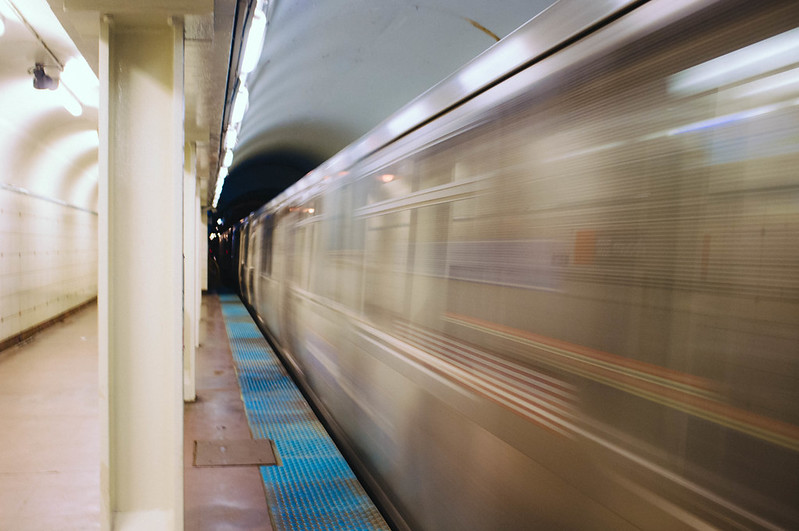
I think that the following photograph captures some of the many layers of a stratified city.
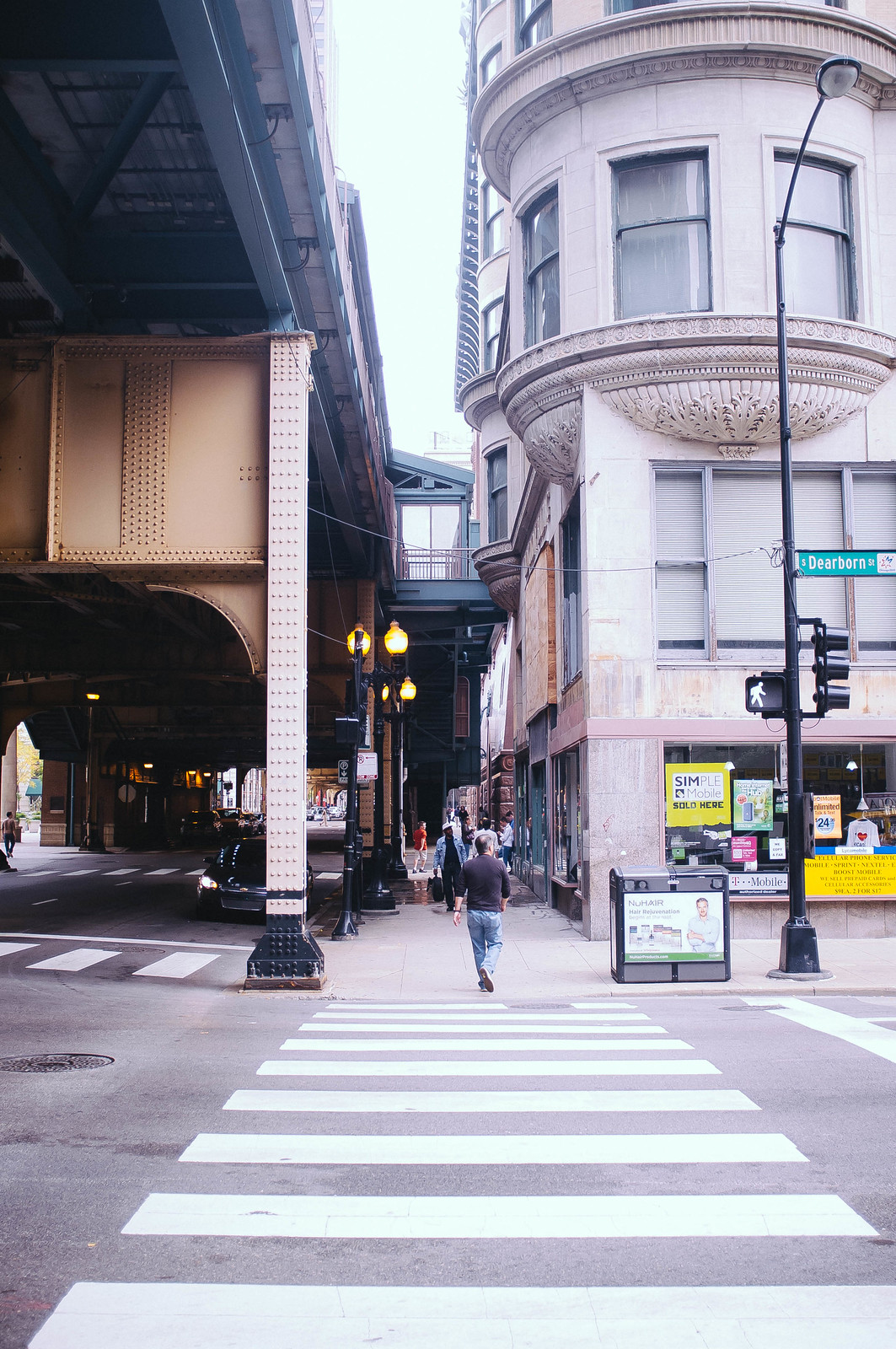
Some more street snaps.
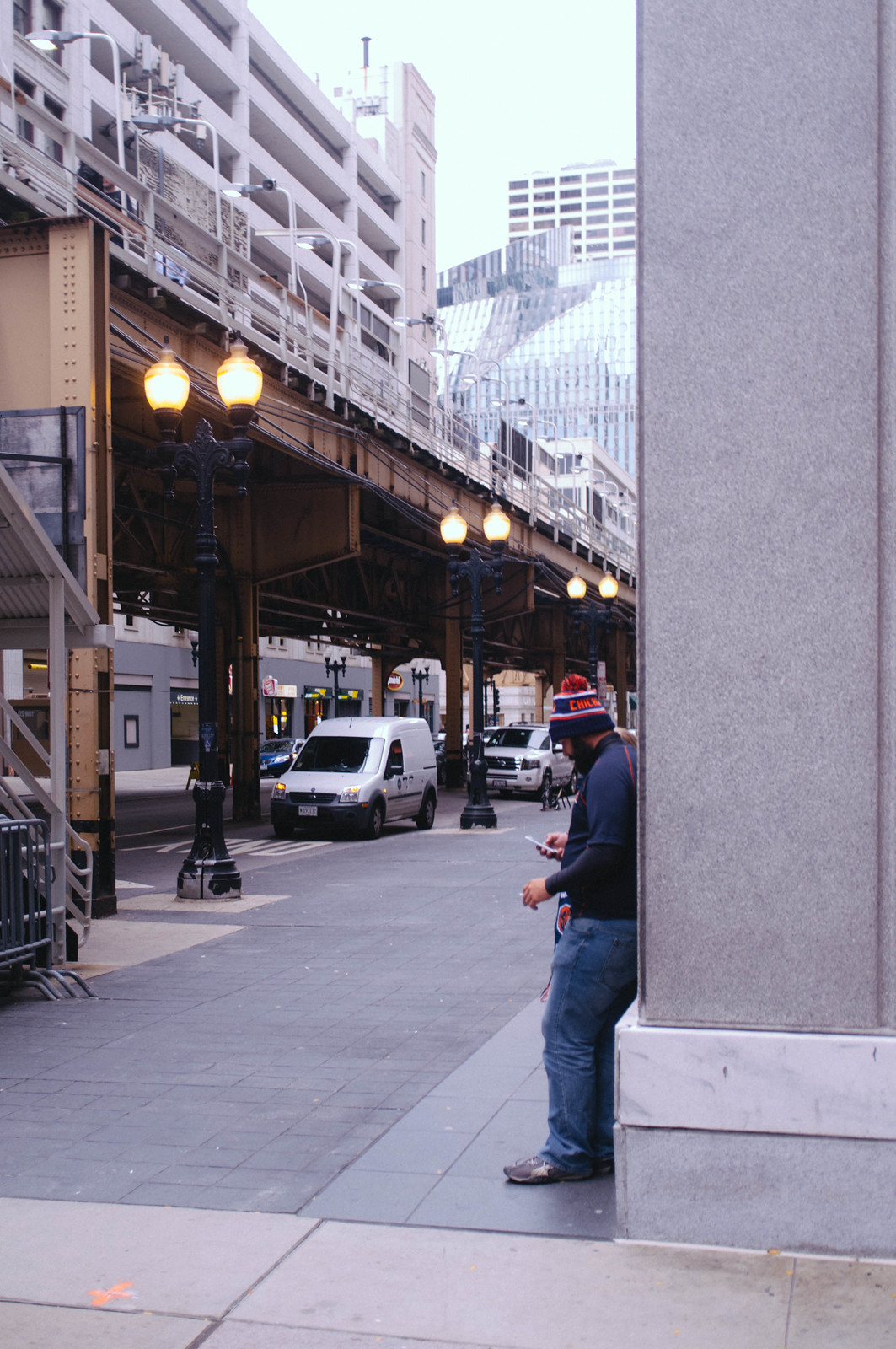
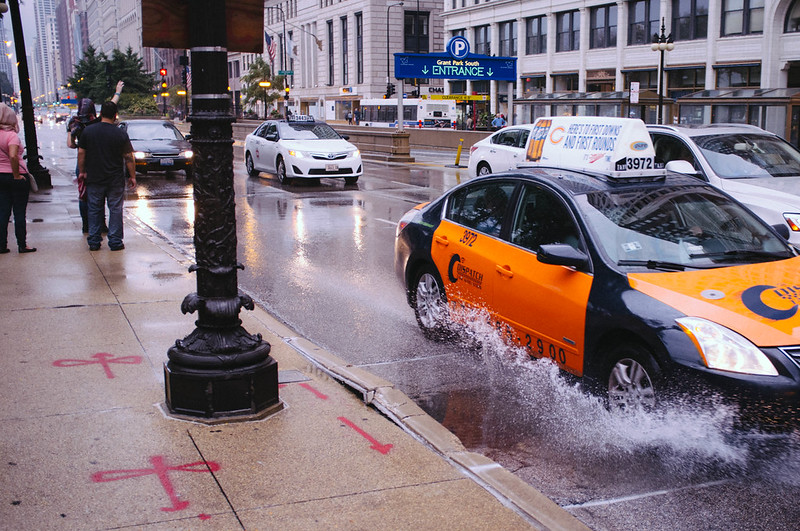
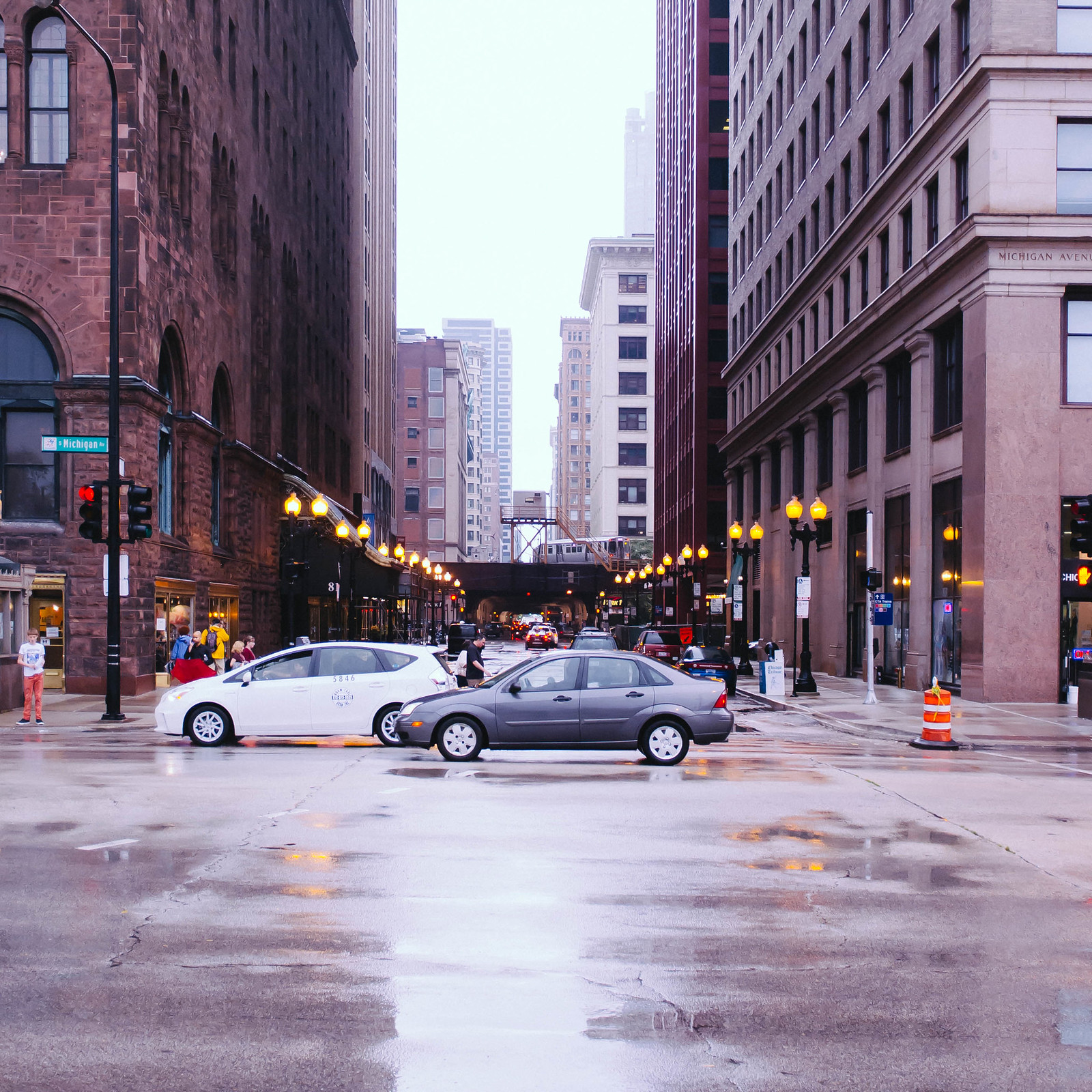
You all know how much I love cars. So, I had to stop to photograph this one. It is a relatively rare, quarter million dollar Lamborghini Gallardo Supperleggera LP570-4.
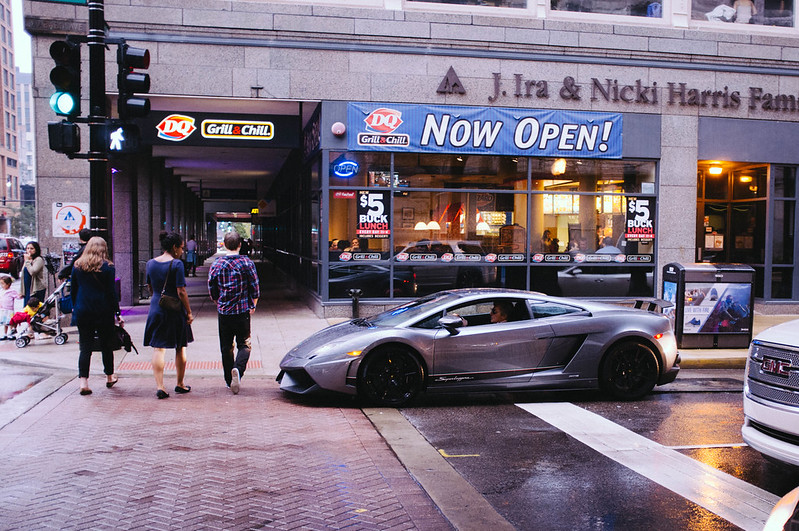
LP570-4 refers to longitudinale/posteriore, the longitudinally mounted engine, the 570 horsepower output of that engine and the 4 wheel drive system the engine is mated to. Superleggera translates to super light. It is basically a Gallardo built for the track.
This one was being driven by a man wearing a scarf. It is an interesting choice of car. I would have expected a Jaguar or an Aston Martin.

I saw this faucet sticking out of a wall of a building near the University of Chicago campus. How weird.
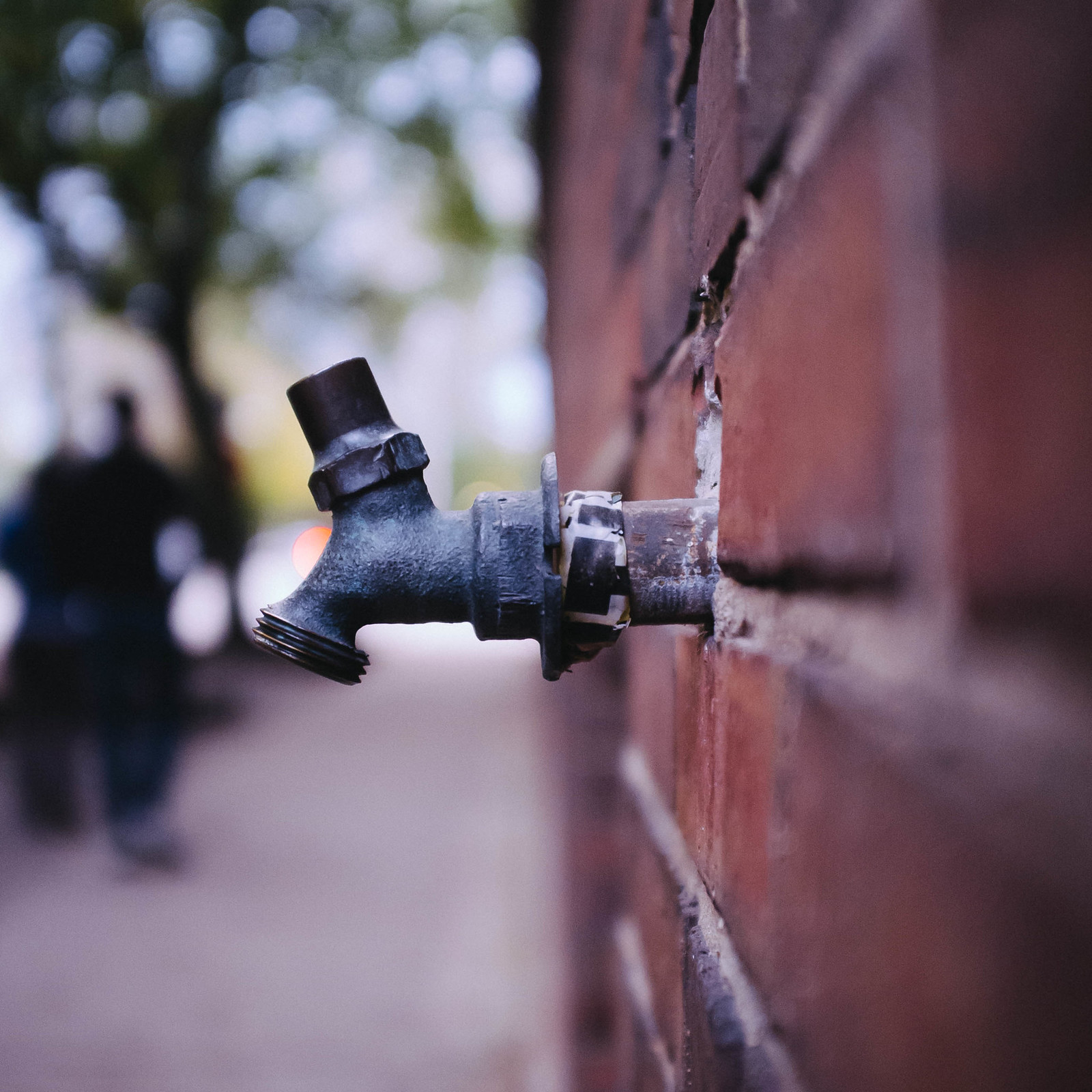
The large triangular building in the foreground of the next photograph is a federal prison, the Metropolitan Correctional Center. When I saw the tower with the slit windows, I instantly knew what it was because of a show about it by my favorite podcast, 99% Invisible. I have embedded that show below. I highly recommend that you listen to it and subscribe if you like design, art, architecture or even just interesting stories.
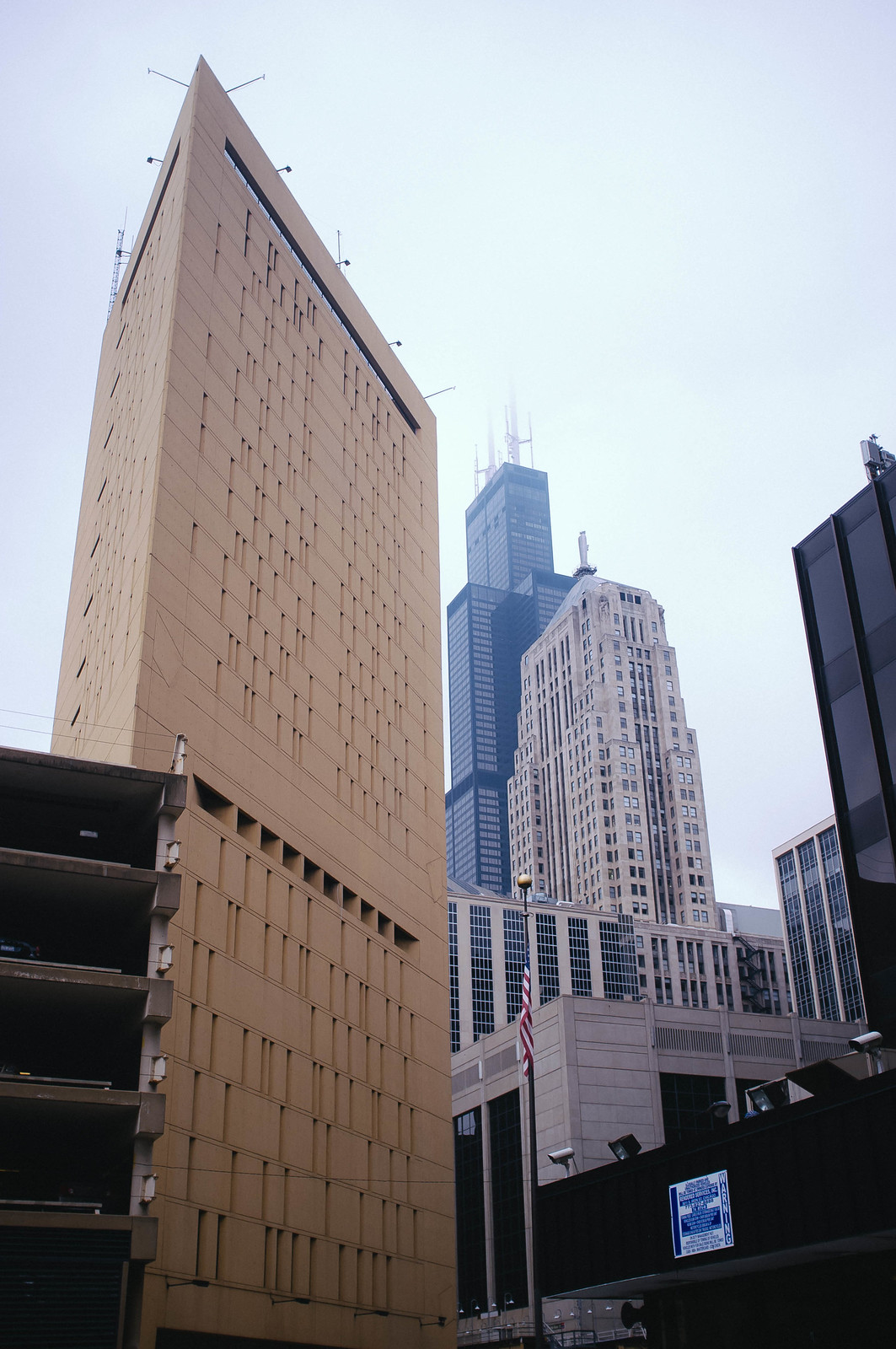

Yet another picture that shows the layers of Chicago.
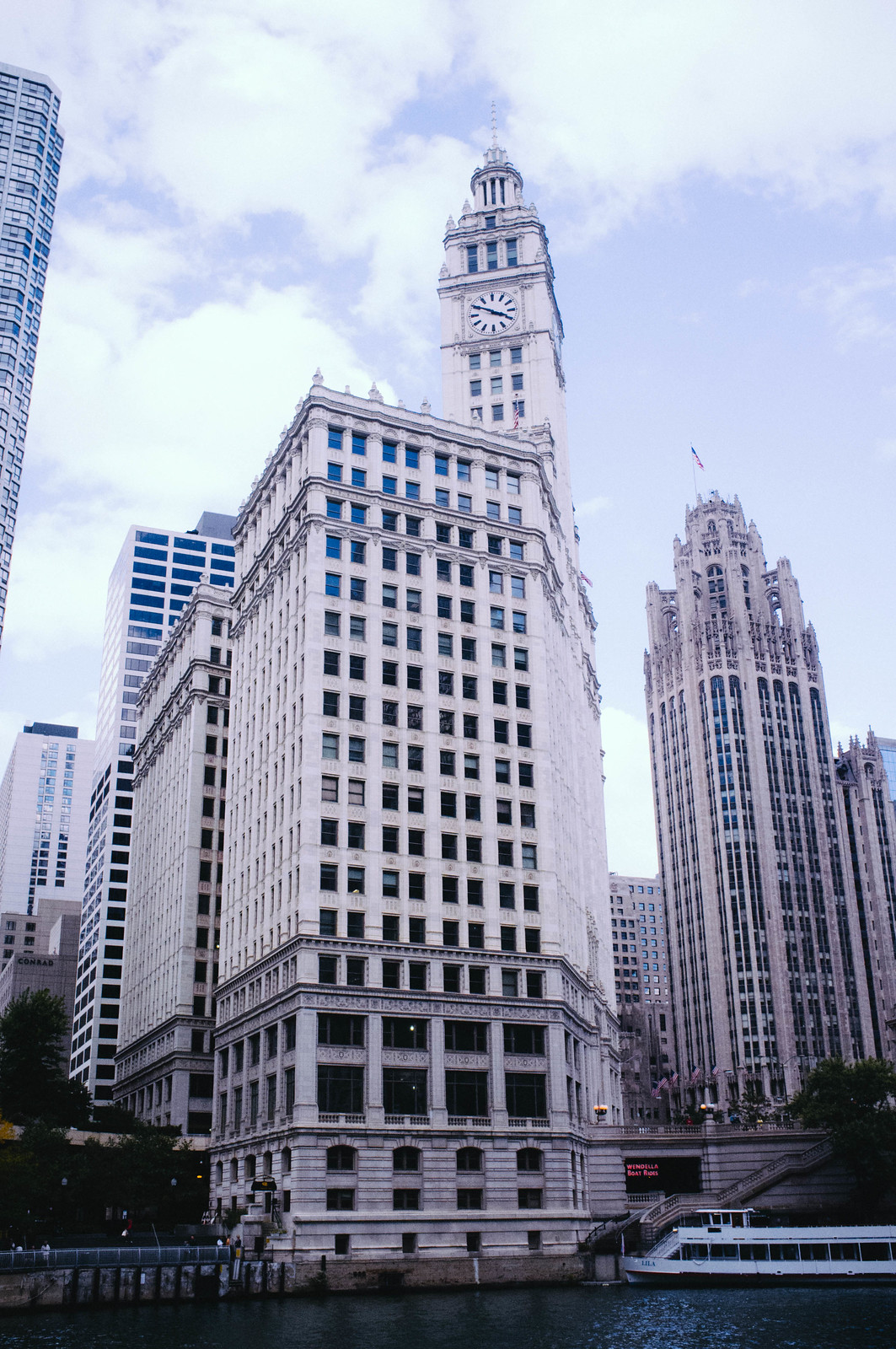
The Chicago River has a very interesting story. Did you know that it runs backwards due to a large capital improvement project in the late 1800s? Learn more about it in yet another show from my favorite podcast that I have embedded below.

I loved my time in Chicago. In many ways, it feels like the younger sibling of New York. It has the tall buildings, the great transportation system and much of the hustle and bustle. It also has its own versions of many things that make New York famous.
However, it still feels unique and that is what is important. It can stand alongside New York, London, Tokyo, Paris and the like. It is a real American city with its own culture and quirks that it built and earned over centuries.
From what I saw, I would love living in Chicago and I certainly like it more than my closest big city, San Francisco.
